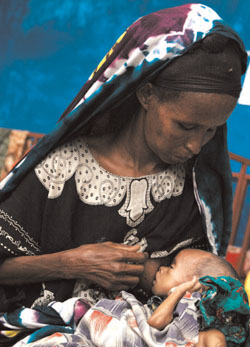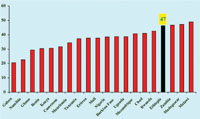6.1 Types of malnutrition
Malnutrition is a general term that includes many conditions, including undernutrition, overnutrition and micronutrient deficiency diseases (like vitamin A deficiency, iron deficiency anaemia, iodine deficiency disorders and scurvy).
Wasting, or thinness, is an indicator of acute (short-term) malnutrition. Wasting is usually the result of recent food insecurity, infection or acute illness such as diarrhoea. Measurement of wasting or thinness is often used to assess the severity of an emergency situation, with severe wasting being highly linked with the death of a child. Figure 6.1 shows a child with undernutrition.

Stunting, or shortness, is an indicator of chronic (long-term) malnutrition. It’s often associated with poor development during childhood and is one of the harmful effects of poverty. Stunting is commonly used as an indicator for development, as it is highly related with poverty.
Underweight is an indicator of both acute and chronic malnutrition. Underweight is a highly useful indicator when examining nutritional trends. It is the indicator used to monitor the Millennium Development Goal (MDG) of ending hunger, and targets of halving the prevalence of underweight children and adults by 2015.
Which type of malnutrition is a result of recent food insecurity or illness?
Wasting (thinness) is the result of recent food insecurity or illness such as diarrhoea or infection.
Look at Figure 6.2 carefully. You can see that Ethiopia has a high rate of stunting (chronic malnutrition). Forty seven percent of children under five years of age are considered to be stunted and this is the fourth highest percentage in Africa.
Learning Outcomes for Study Session 6

